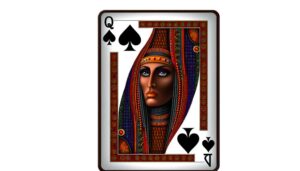Interpreting the Meaning of the Shepherd and Flag Symbol in Religious Art
The symbols of the shepherd and the flag embody profound historical, religious, and cultural significance. In early Christian iconography, the shepherd represents pastoral care and Jesus as the Good Shepherd, signifying guidance and protection.
The flag symbolizes divine victory over sin and moral order. Culturally, these symbols have evolved, reflecting leadership and unity in various societies.
Modern interpretations extend to leadership ethics, social justice, and global inclusivity. Art and political contexts further enhance their meanings, encapsulating ideologies and national identity.
These symbolic representations continue to influence collective values and experiences across diverse cultures. Explore further to uncover deeper insights.

Key Takeaways
- The shepherd symbolizes pastoral care, guidance, and protection rooted in Judeo-Christian traditions.
- The flag signifies victory over sin, divine order, and national unity.
- In Medieval Europe, the shepherd represented leadership and protection.
- Modern interpretations of the flag emphasize inclusivity, global unity, and social justice.
- Both symbols communicate complex cultural, religious, and historical narratives.
Historical Origins

The historical origins of the shepherd and flag symbol can be traced back to early Christian iconography, where it was often used to represent pastoral care and guidance. This symbol emerged during the early centuries of Christianity, a period marked by the need for metaphors that resonated with a largely agrarian society.
The shepherd, a figure of care and leadership, was commonly depicted holding a staff or a flag, signifying authority and protection. Artifacts from catacombs and early Christian frescoes frequently illustrate this imagery, underscoring its role in communicating spiritual leadership.
This emblematic representation served as a visual shorthand for the responsibilities of religious leaders, intertwining themes of guardianship and moral direction within the broader tapestry of Christian symbolism.
Religious Significance
Building on its historical origins, the shepherd and flag symbol has evolved to embody profound religious significance. It represents not only pastoral care but also the divine authority and guidance bestowed upon spiritual leaders.
This emblem is deeply rooted in Judeo-Christian traditions. The shepherd often symbolizes Jesus Christ, who is seen as the 'Good Shepherd' guiding his 'flock' – the faithful. The flag, often a cross or banner, signifies victory over sin and death, and the establishment of divine order.
This dual imagery serves as a theological metaphor, emphasizing the role of religious leaders as both protectors and heralds of spiritual truth. The symbol's rich connotations reinforce the integral relationship between guidance, authority, and spiritual salvation.
Cultural Interpretations

Cultural interpretations of the shepherd and flag symbols exhibit significant variance across historical epochs, reflecting diverse societal values and narratives.
Examining these symbols through the lenses of historical symbolism variations and religious significance perspectives reveals a complex tapestry of meanings.
Moreover, modern cultural adaptations of these symbols highlight their evolving roles and contemporary relevance.
Historical Symbolism Variations
Across diverse cultures, the shepherd and flag symbol has evolved to embody a range of nuanced meanings, reflecting historical contexts and societal values. This evolution can be categorized into three primary variations:
- Medieval Europe: The shepherd often symbolized leadership and protection, while the flag represented fealty and allegiance to monarchs or lords.
- Nomadic Tribes: Among nomadic cultures, the shepherd signified guidance and sustenance, with the flag denoting tribal unity and territory.
- Colonial Periods: In colonial contexts, the shepherd was a metaphor for colonial administrators overseeing new territories, and the flag signified dominance and control over these regions.
These variations highlight the symbol's adaptability and its role in communicating complex socio-political and cultural narratives across different epochs.
Religious Significance Perspectives
The shepherd and flag symbol, within religious contexts, often embodies themes of divine guidance, spiritual leadership, and communal identity, reflecting the intricate relationship between belief systems and cultural expressions. Throughout various traditions, the shepherd is seen as a caretaker of the faithful, while the flag signifies unity and shared values.
| Religion | Shepherd Symbolism | Flag Symbolism |
|---|---|---|
| Christianity | Jesus as the Good Shepherd | Banner of faith and victory |
| Islam | Prophets guiding the Ummah | Standard of unity and divine will |
| Hinduism | Krishna as the divine herdsman | Flags atop temples, representing divine presence |
| Buddhism | Bodhisattvas guiding sentient beings | Dhvaja, symbolizing spiritual triumph |
This synthesis underscores the enduring role of symbols in articulating and perpetuating religious tenets and community cohesion.
Modern Cultural Adaptations
How have modern societies reinterpreted the shepherd and flag symbols to reflect contemporary values and cultural dynamics?
The shepherd, traditionally symbolizing guidance and protection, is now often used in leadership contexts, emphasizing ethical stewardship. Meanwhile, the flag, historically a marker of national identity, has evolved to represent inclusivity and social movements.
Modern cultural adaptations include:
- Leadership Ethics: The shepherd symbolizes moral leadership and community care in business and politics.
- Social Justice: Flags are reimagined to embody causes such as LGBTQ+ rights and environmental activism.
- Globalization: Flags now often transcend national borders, symbolizing global unity and cooperation.
These reinterpretations reflect how traditional symbols adapt to express evolving societal values and cultural narratives effectively.
Symbolism in Art
Symbolism in art serves as a profound mechanism through which artists communicate complex ideas and emotions, often encapsulating cultural, religious, and historical narratives within a single image. This practice allows for multiple layers of interpretation and deep engagement with the artwork. For instance, the shepherd commonly symbolizes guidance and protection, while the flag can represent national identity or a collective cause. These symbols transcend simple visuals to become vessels of meaning.
| Symbol | Meaning |
|---|---|
| Shepherd | Guidance, Protection |
| Flag | National Identity, Unity |
| Dove | Peace, Purity |
| Hourglass | Time, Mortality |
| Chain | Bondage, Connection |
Through this table, viewers can discern the multi-faceted dimensions of symbols within art, enriching their appreciation and understanding of the work.
Political Meanings

Political symbols serve as powerful tools for articulating ideologies, rallying social movements, and fostering collective identity within a populace. The shepherd and flag imagery have particularly potent political connotations.
Leadership and Guidance: The shepherd often symbolizes a leader who guides and protects the community, embodying qualities of care and responsibility.
National Identity: Flags are quintessential political symbols representing sovereignty, unity, and shared values, often evoking strong nationalistic sentiments.
Resistance and Revolution: Combined, the shepherd and flag can symbolize grassroots movements and the fight for autonomy, highlighting a struggle against oppression.
These symbols transcend mere representation, encapsulating complex narratives that resonate deeply with historical and contemporary political discourses. Understanding their layered meanings offers insight into the sociopolitical fabric of societies.
Modern Representations
In contemporary contexts, the shepherd and flag continue to serve as poignant symbols, reflecting evolving societal values and political dynamics. The shepherd often embodies leadership grounded in compassion and guidance, resonating in various fields such as community organization and spiritual leadership.
Conversely, the flag remains a potent emblem of collective identity and national pride, adapting to represent movements for social justice, environmental sustainability, and global unity. These modern representations are not static; they are continuously reinterpreted to address current issues and aspirations.
The interplay between the shepherd's pastoral care and the flag's unifying presence underscores a complex narrative, one that integrates historical significance with contemporary relevance, fostering a deeper understanding of collective human experience.
Psychological Impact

The psychological impact of the shepherd and flag symbols extends beyond their immediate visual appeal, influencing individuals' sense of security, belonging, and identity. These symbols resonate on a deeper level due to their historical and cultural contexts, evoking potent emotional responses.
The shepherd, often seen as a guardian, and the flag, symbolizing unity and patriotism, elicit specific psychological effects:
- Sense of Security: The shepherd symbolically represents protection and guidance, fostering feelings of safety.
- Belonging: Flags embody collective identity, creating a sense of community and shared purpose.
- Identity Formation: Both symbols contribute to individual and group identities, reinforcing personal and societal values.
Understanding these effects enriches our comprehension of their enduring significance in human psychology.
Global Perspectives
Across diverse cultures, the shepherd and flag symbols manifest unique meanings that reflect varied historical, social, and ideological contexts. The shepherd often symbolizes guidance and protection in pastoral societies, while the flag represents national identity and unity. Analyzing these symbols provides insight into their societal roles:
| Symbol | Cultural Significance |
|---|---|
| Shepherd | Guidance in rural communities |
| Shepherd | Religious connotations in Christianity |
| Flag | National pride and sovereignty |
In many Eastern traditions, the shepherd embodies wisdom and spiritual leadership. Conversely, in Western cultures, flags often denote militaristic valor and patriotic fervor. This comparative analysis underscores how symbols adapt to cultural narratives, offering a lens into collective human experiences and values across civilizations.
Conclusion
In examining the shepherd and flag symbol, it becomes evident that its meanings are multifaceted, encompassing historical, religious, cultural, artistic, political, and psychological dimensions.
This symbol functions as a mirror reflecting societal values and beliefs across time and place. As the saying goes, 'A picture is worth a thousand words,' underscoring the profound impact of visual symbols in conveying complex ideas.
Ultimately, the shepherd and flag endure as powerful emblems within the global tapestry of human experience.






